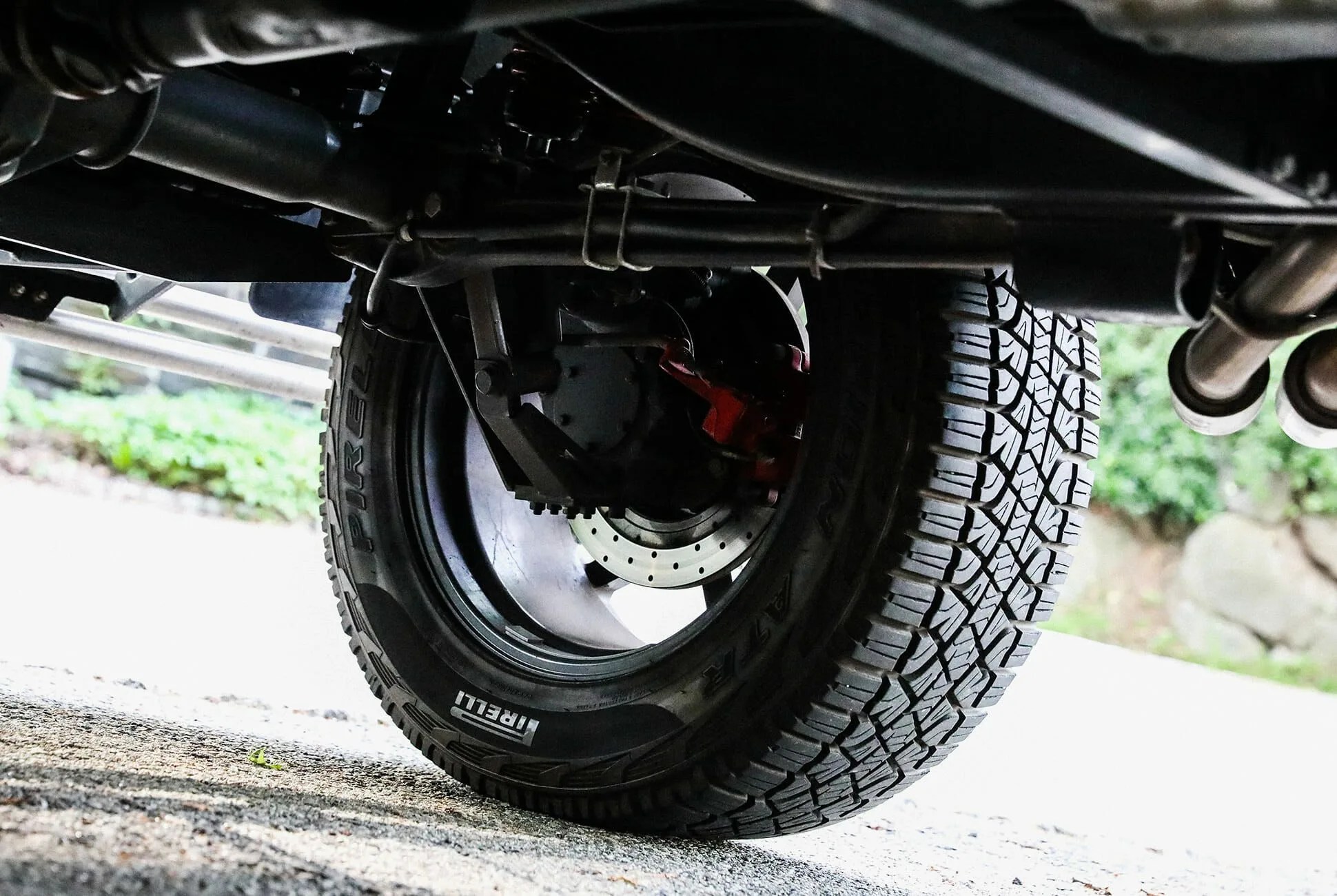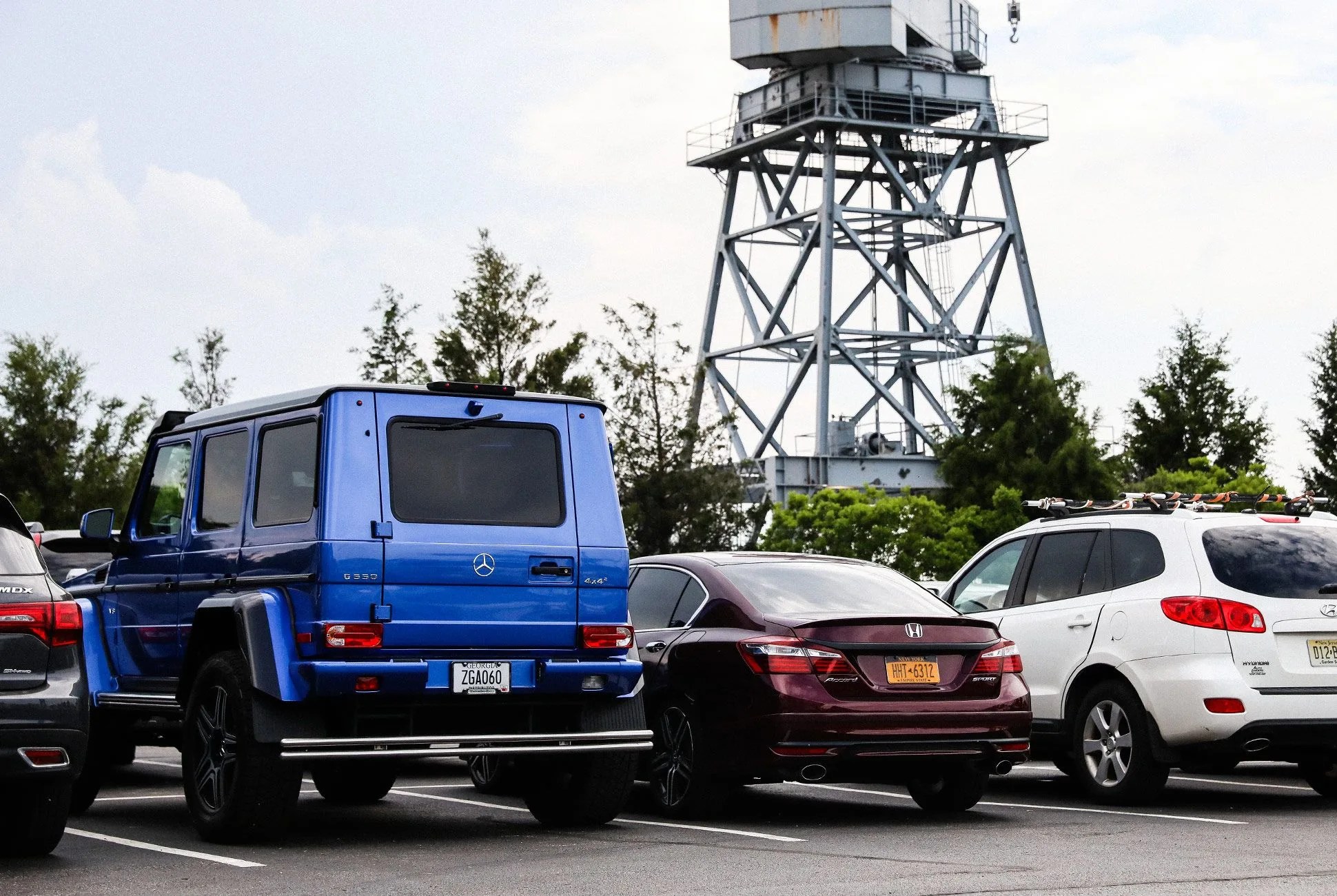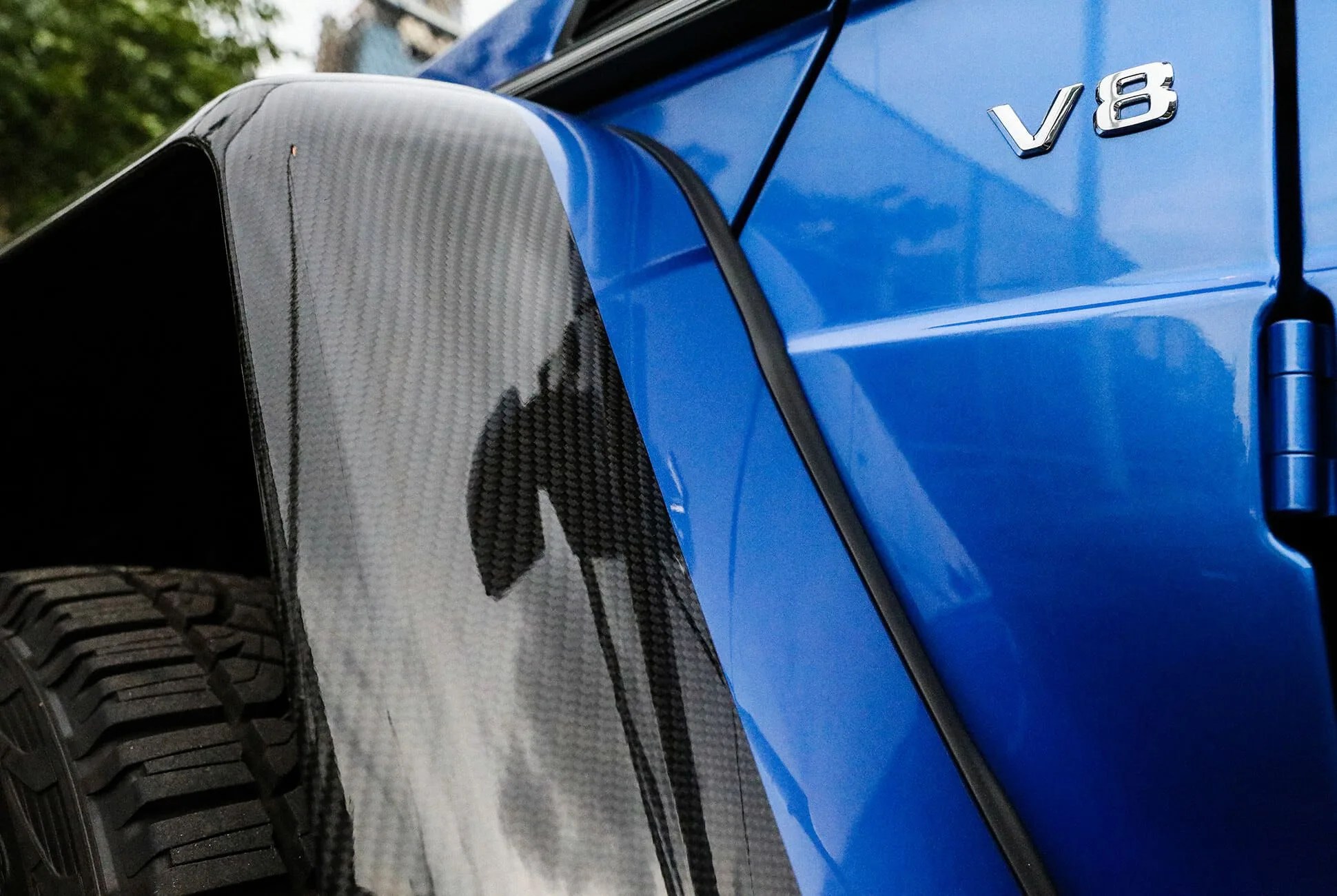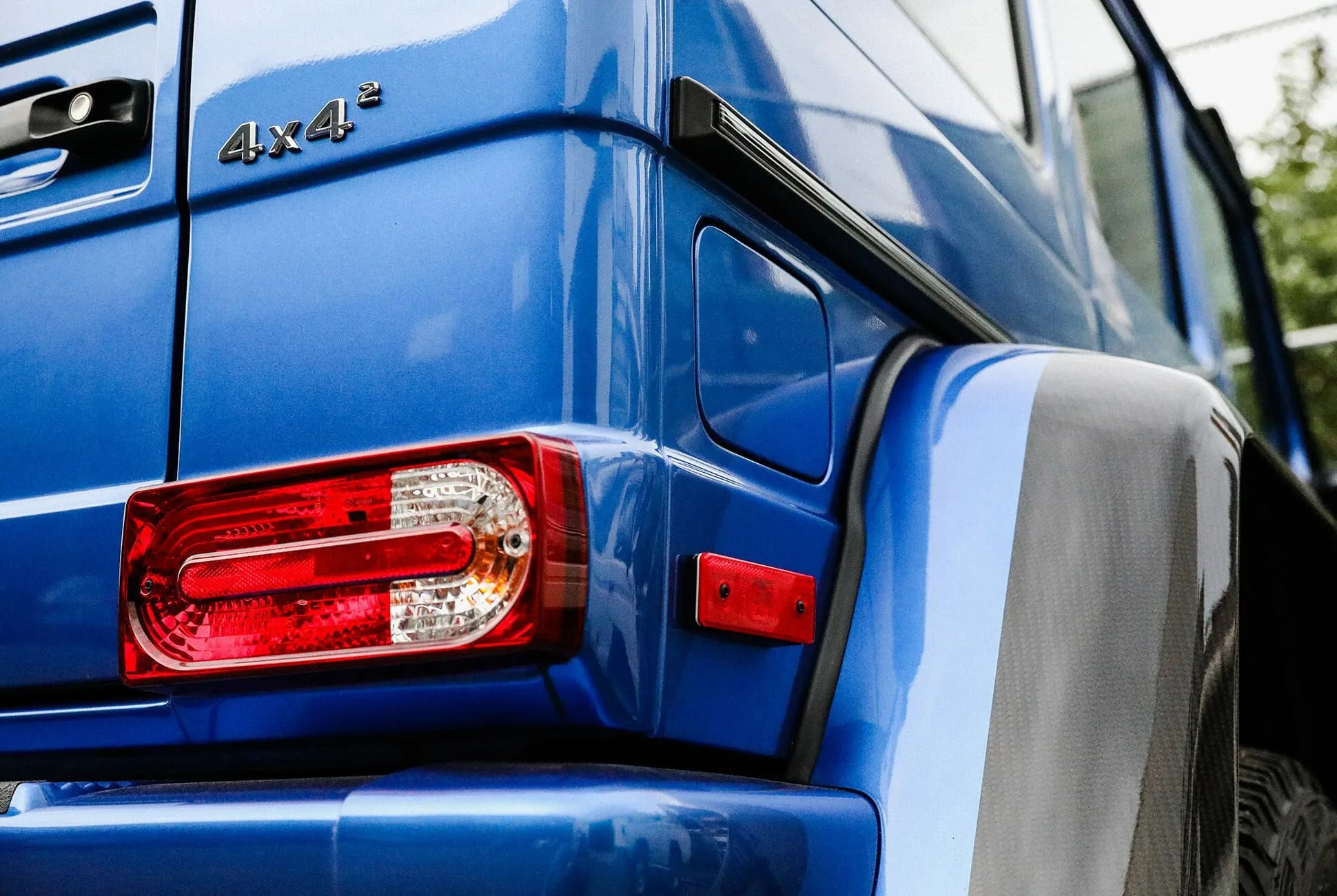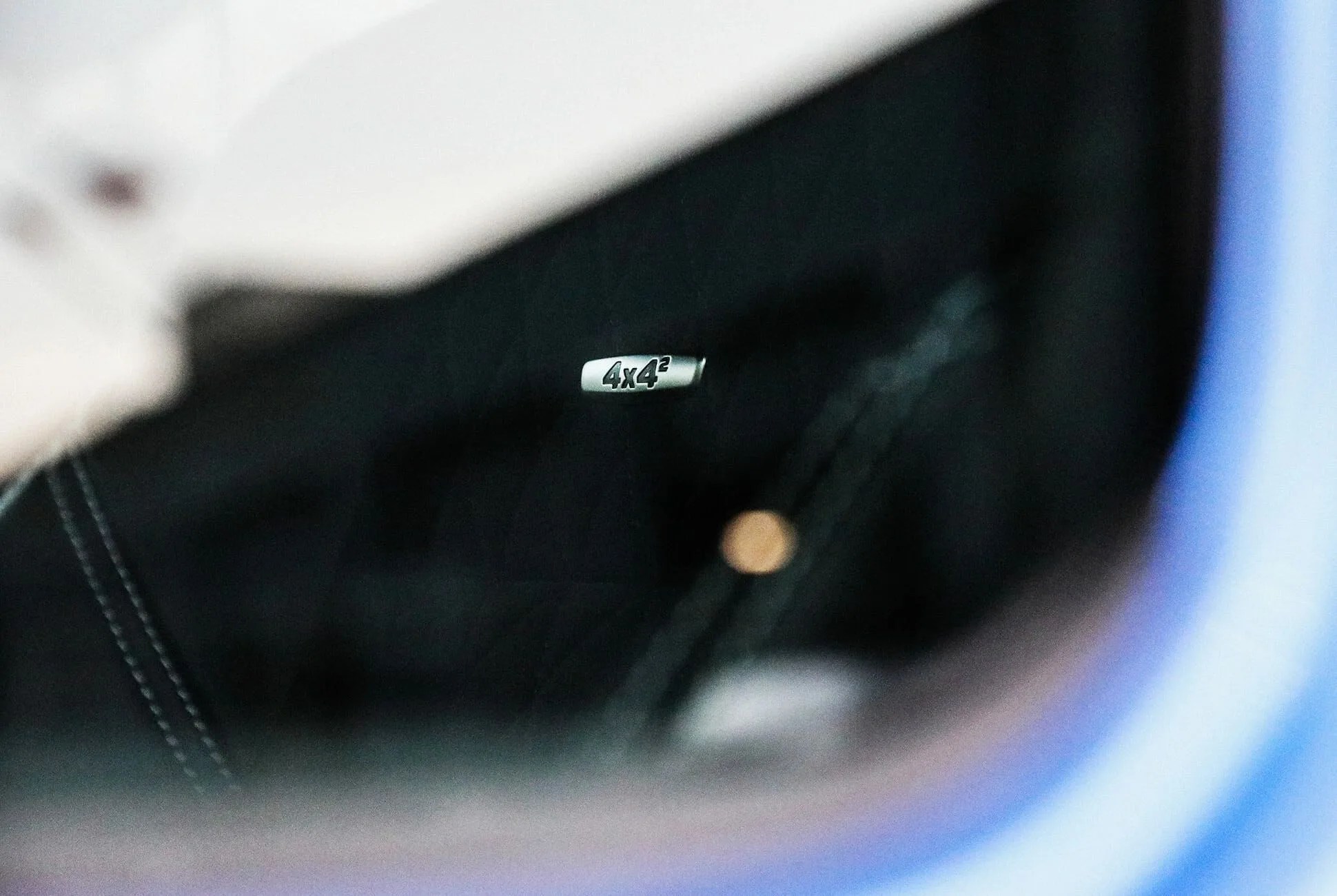8 photos
The Mercedes-Benz G 550 4×4 ($227,300), or “4×4 Squared,” is seven feet, four inches tall. Even with my gangly, six-foot-tall frame, entering the cabin is a chore: I have to heave my foot higher than is naturally acceptable, grab the steering wheel and pull myself into the luxuriously-appointed driver’s chair. With a few distinct and diamond-quilted differences, this is, no doubt, what it’s like for semi-truck drivers to enter their trusty steeds. And like a semi-truck, the 4×4 is taller and wider than almost everything on Manhattan roads.
But, while this truck, which is based on the Mercedes-Benz G-Class “Geländewagen,” is weirdly, perfectly at home in the big city, it really belongs in the wilderness. The massive SUV is, after all, capable of scrambling over terrain that is completely inaccessible to 99 percent of the “off-road” SUVs on the market. This capability, most visible in its extreme ground clearance, is possible thanks to an old-school mechanical wonder: the portal axle. Below, four things you must know about the portal axle, which also happen to be required knowledge for appreciating the Mercedes-Benz 4×4 squared.
The Axle Doesn’t Connect Directly to the Wheel Assembly
In most vehicles, axles — the shafts that run between opposing (front and front, back and back) wheels — are essentially one uninterrupted component. At the end of the conventional axle is a wheel hub, a gearing system that allows the axle’s motion to be translated at a 90-degree angle and, consequently, to turn the wheel. It’s all one mostly arrow-straight system.
In a portal axle, the axle shaft is above the wheel hub. At the ends of the axle is a more complex system of gears that translate motion downward to the wheel hub — an added step that allows the axle shaft to be higher than the center of the wheels. Essentially, the axle rotates on a higher plane than the wheels, which allows, among other things, for higher overall ground clearance. See what I mean in Eric Adams’ video below.




